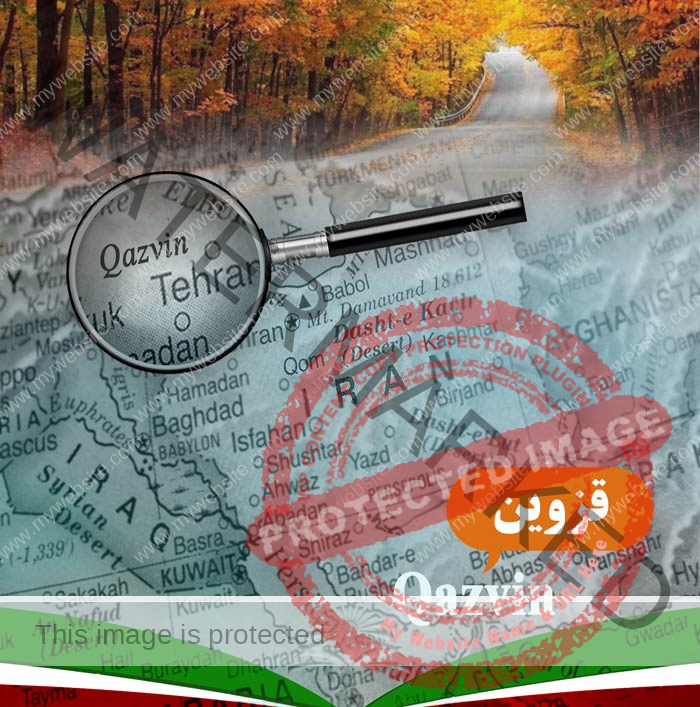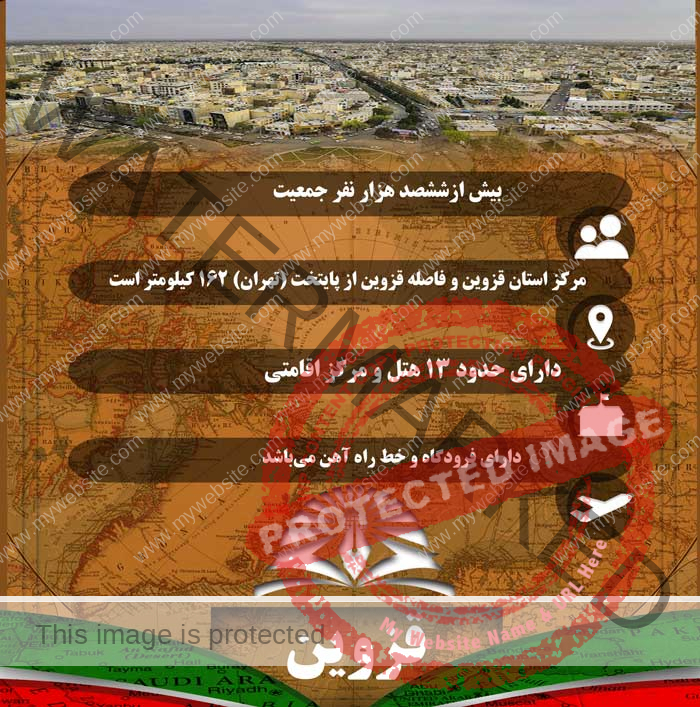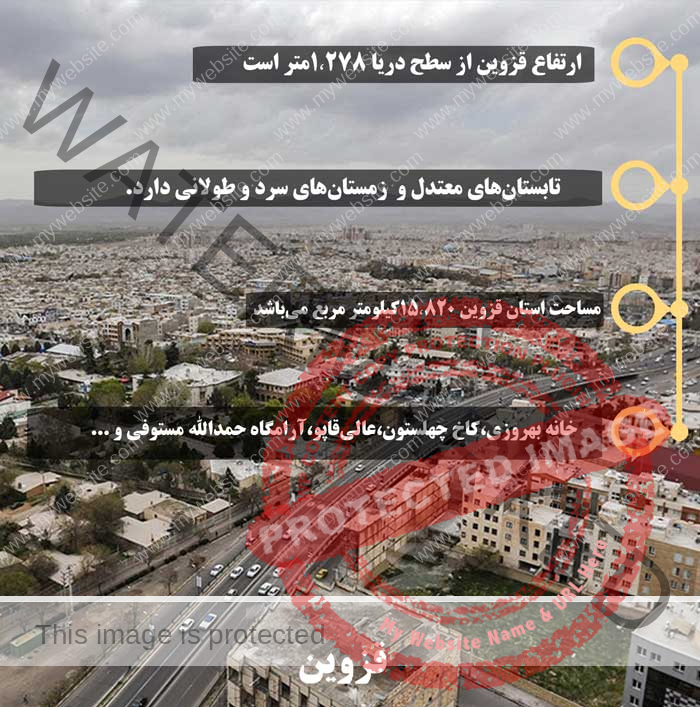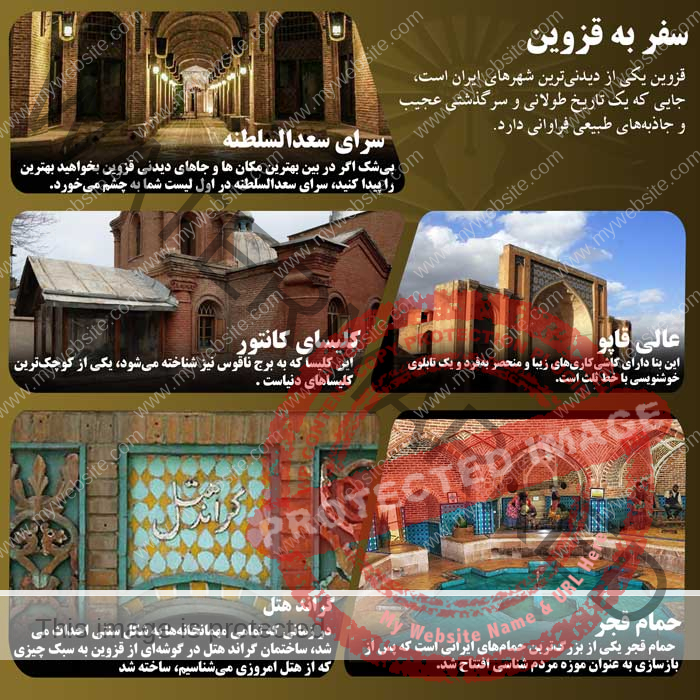![]()
Qazvin is one of the cities of Iran which is located in the central part of this country and it was also the capital of Iran for some time in the past. Studying in Qazvin includes many advantages, from its climate to other facilities, it has become easy for you.
Qazvin
Qazvin city, the capital of Qazvin province, is located at an altitude of 1,278 meters above sea level. The history and roots of the city go back to the Sassanid era when it flourished under the orders of the Sassanid king Shapur. This city, the economic highway of the Silk Road, was a place of passage for merchants and traders who took their goods from east to west.
Qazvin was the capital of Iran during the Safavid rule for 57 years and therefore has many historical places and museums. This city is the great calligraphy capital of Iran, and Mir Emad Qazvini is one of the famous calligraphers of Persian calligraphy. This city ranks first in Iran and third in the world in terms of the number of historical works, and among these various ancient and ancient works is Samiran Castle. , Saad al-Sultaneh Caravanserai, Qazvin Jame Mosque, Mimon Qala, Qajar Bath, Sardar Reservoir, Prophetiyeh, Chehlsetun Palace, Imamzadeh Hossein and Sepeh Street (Iran’s first street).
This city was chosen as a clean city of Iran by the vice president and head of the country’s environmental protection organization in 1392 due to the presence of 2,500 hectares of ancient gardens around the city and the existence of 1,400 hectares of Barajin gardens.
Transportation
The city has an airport for light aircraft and special services such as recreation and education. Qazvin Municipality has purchased the city’s airport in line with the development of the city’s transportation lines; and intends to develop the above airport and turn it into a passenger airport in line with the tourism development of this city. Currently, the flight of small passenger planes (such as Fokker 100) is possible at this airport.
The city has two passenger terminals in the east and west axes. The Azadegan terminal with an area of 27,966 square meters is located on the east axis and the West Shahr terminal operates on the west axis with an area of 8,328 square meters.
Bus
The bus organization of the city has three general sections of the administrative system, the bus stop and the repair station located at the Vali-Asr intersection, and the Shahid Rajaee stop, 165,000 people are transported by buses and 130,000 people by the minibuses of this organization daily in the city and suburbs. Also, currently, 20 bus lines under the Qazvin Bus Organization are providing services, of which 15 are intra-city lines and 5 lines travel from the origin of Qazvin city to the cities of Mohammadiyeh, Saneti and Alvand, Iqbaliyeh, Mahmoudabad, Chobinder.
Taxi
The City Taxi Management and Supervision Organization was established in September 1376. The task of this organization is to organize and control the taxis of the city. Currently, more than 6000 taxis provide services to the people of the city.
Tourist Places
Historical Attractions
Safavi Garden Collection
The Safavi government house complex is located in the center of the city with an area of over 6 hectares, the Safavi government house or cultural garden of Qazvin starts from the noble Qapo building in the north of Sepe Street and at the end, it connects to the area of Chehelston mansion and along the way passing through several courtyards and Open area, the possibility of visiting the works and remains left from different periods (Safawi, Afshariya, Zandiye and Qajar) such as Ali Qapo Head, Ali Qapo Garden, Shahrbani Mansion, Shatrakhan, Grand Hotel, Grand Hotel Cinema, Prophetiyeh, Chehlsetun Palace and the museum of this city. provides
Mansions
Qazvin has many mansions and palaces due to being the capital of the Safavid era and the presence of princes and emirs in different historical periods. The most famous building in this palace is Chehelston, which is the only remaining palace from the Safavid period. This palace was originally a guest house and a place to receive the king’s guests. Among other buildings in Qazvin, we should mention the municipal building, the first municipal building in Iran in 1306, which was built by the Russians.
Bagh Sepehdar mansion, the current agricultural museum, Sardar Mofkham mansion or Amir Kabir’s House of Culture, Shahrbani mansion, and Mayun Qala, which is one of Al Boyeh’s royal palaces, can be considered the most prominent palaces and buildings in Qazvin.
Historical Houses
- Behrouzi House
- Aref Qazvini’s House
- The house of the Yazidis
- Jalil Arazi’s house
- Daei – House
- Darbandi House
- Reofi’s House
- Zanjanchi House
- Sarukhani House
- Ghaemi’s House
- Muney’s House
- Dedicated House
- Saad Al-Sultan’s House
- The historical House of Zaim
- Amini’s house and Hosseinieh
- Seyed Hossein Beheshti’s House
- Seyyed Mahmoud Beheshti’s House
City Gates
In the past, the city of Qazvin had eight gates, which were known as Rasht Gate, Bagh Shah Gate, Darb Kushk Gate, Tabriz Gate, Old Tehran Gate, Sheikh Abad Gate, Imamzadeh Hossein Gate, and Khandaqbar Gate. Today, only two gates remain, Darb Kushk and Tehran.
Hot Springs
There are many hot springs in Qazvin, among them are Razavi Hamam, Qajr Hamam, Dodar Hamam, Seydian Hamam, Mirza Karim Hamam, Haji Mohammad Rahim Safa Hamam, Bilor Hamam, Rah Ray Hamam, Darogheh Hamam, Akhund Hamam Qazvin, Pir Hesar Hamam, Hamed Binder Kocheh bath, Ghosheh bath, Sadiah bath, Haj Bigler bath, etc., all of which with different and valuable architecture and decorations are considered to be the sights of Qazvin city.
Tombs
- Tomb of Hamdullah Mostofi
- Tomb of the Third Martyr
- Barajin Tower
- Mausoleum of Sultan Weiss
- Tomb of Abbas Babaei
Churches
- Kantor Church
- Rafi Church
Nature Attractions
- People’s peak
- Niag stone porch
- Barajin region
- Vercher waterfall
- Yale Gonbad Spa
- Shojauddin peak
- Sultan Weiss peak
- Traditional gardens of Qazvin
- old garden
Hotels and Accommodation Centers
Most of the hotels and accommodation centers in Qazvin are located on Imam Khomeini Street and near it.
- Marmar Hotel (the beginning of the city entrance (East)
- Behrouzi traditional hotel
- Alborz Hotel (near the city center)
- Iran Hotel (city center)
- Taleghani Hotel (Khaksar)
- Sports Hotel (private and sports use)
- Mir Emad Hotel (ten minutes away from the city center)
- Iranian Hotel (outside the city)
- Safir Hotel near the market
- Rajya Hotel
- Hanel Mino intersection of Vali Asr
- Bagheri house passenger
- Central passenger house
- The passenger of Bo Ali’s house
- Golshan house passenger
- Nasim North House passenger
Studying in Qazvin
As mentioned above, this city is rich in sightseeing centers and historical background. Qazvin is located on the communication route from east to west and south to north of the country, close to Tehran and Karaj, having several industrial towns and facilities. suitable for education and science, including several state and non-state universities, including Imam Khomeini International University, Qazvin University of Medical Sciences, and Islamic Azad University – Barajin have a good position in Iran.








